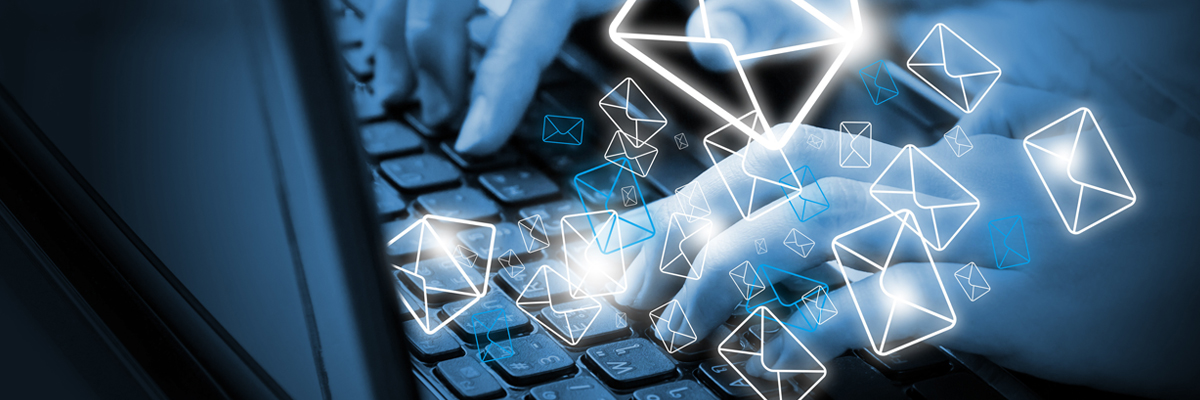Re-Sending Email: the Pros, the Cons & 8 Suggestions for Striking a Balance

Blog post By Paula Chiocchi on 2018-08-08
All marketers have been there.
Swamped with a maddening mix of urgent marketing deliverables, the temptation will arise to simply resend the most recent email blast without any changes to it whatsoever. This maneuver might even seem justified if there was a deliverability issue (e.g. some of your list wasn’t included before), it was sent at the wrong time of day, or the previous campaign simply didn’t deliver the desired results and you’d like to give it another go.
But there are certain pros and cons to consider before simply hitting “re-send.”
- Pros:
- The ability to simply repurpose your existing (presumably very good) work
- No incremental copywriting, creative or production costs
- A second, reminder message may spur busy professionals to act
- Some studies indicate sending a second repeat message can reach over half of a desired target audience, and deliver about a third of unique opens, compared to sending a single email campaign.
- Cons:
- Those who were interested in your offer may have already responded, and you’re merely sending again to those already uninterested, unengaged or inactive.
- Some recipients, who may have deleted your initial message, may be annoyed about receiving it again and may unsubscribe from your list.
- Resending the same email twice increases the risk of being flagged for spam or even blacklisted by some internet service providers (ISPs).
- A second unaltered follow-up email will inevitably not perform as well as the first. The firm in the same article above showed a 44% drop in open rate and 46% drop in click-through rates compared to the initial email.
Perhaps there’s a happy medium here that can help you strike a balance of repurposing your messaging and making some minor changes so as to not annoy your audience:
- Let it breathe: Don’t resend your same email the following day after sending the first – recipients don’t want to see the same message unopened (again) in their email queue. Allow some time – perhaps a week or maybe even two – to pass between sends. At OMI, we’ve found that many of our clients see great results – and minimal blowback – when sending three of the same campaign messages over a two-week timeframe.
- Tweak it slightly: Changing just a few minor cosmetic elements – the subject line, the headlines, the colors or the graphics (such as the featured image) – might be quick and easy to make the email seem new to the recipients (as well as to spam filters).
- Send at a different time and date: These days, everyone has myriad work schedules, and may prefer reading emails at different times and days. Try simply sending your second, unaltered email at a different day and time than the first one. This may allow you to catch your audience at a more convenient time.
- Target the planner and procrastinator: Some people are early-bird planners while others jump at the last minute only when faced with a hard deadline. Savvy marketers try to reach all planning types: if recruiting for event or webinar participants, send your first promotional email two weeks before the occasion (to catch the early birds), the next message one or two days before (to hit the ‘tweeners), and the final one the day of the event (to land the last-minute procrastinators).
- Turn up the heat: Increase the urgency in the messaging and headline (e.g. “only one more day to register for Thursday’s invitation-only webinar…”) or reach the cost-conscious by announcing impending cost increases (e.g. “early-bird rates ending this Friday….”)
- Remove previous responders: Don’t resend your same email to the identical group as before. Resending your message to those who’ve already responded or registered may even backfire. Remove those people who declined (or complained) from your follow-up list.
- Send a separate note to previous initiators: It also might not make sense to re-send your email to those who’ve already opened or clicked on it, as they likely made their evaluation and decision. Instead, send a separate note to those who may have initiated, but didn’t complete a purchase, download or registration.
- Test constantly: Email marketers should regularly test their campaigns to know the optimal dates and times their audience responds, the best subject lines and email messaging, and the calls to action that generate the most interest.
By making a few minor changes, you may be able to enjoy the ability to repurpose previous content without annoying your audience – and get back a bit of time in your busy schedule.
Do you re-send your email campaigns unchanged? Tell us how it works for you!
Outward Media’s accurate, targeted email data can help you achieve better email marketing ROI by targeting your best prospects – including millennials and other generations -- and, ultimately, converting more prospects into customers. Take a look at our case studies to find out more.
DOWNLOAD YOUR FREE ebook
At OMI, we believe good things happen when you share your knowledge. That's why we're proud to educate marketers at every level - in every size and type of organization - about the basics of email marketing and the contact data that powers it.
-
The Executive's 15-Minute Guide to Building a Successful Email Marketing Database
-
A 15-Minute Guide to Fortune 2,000 Businesses and Executives
-
Five Best Practices for Using Email Marketing to Target SMBs



